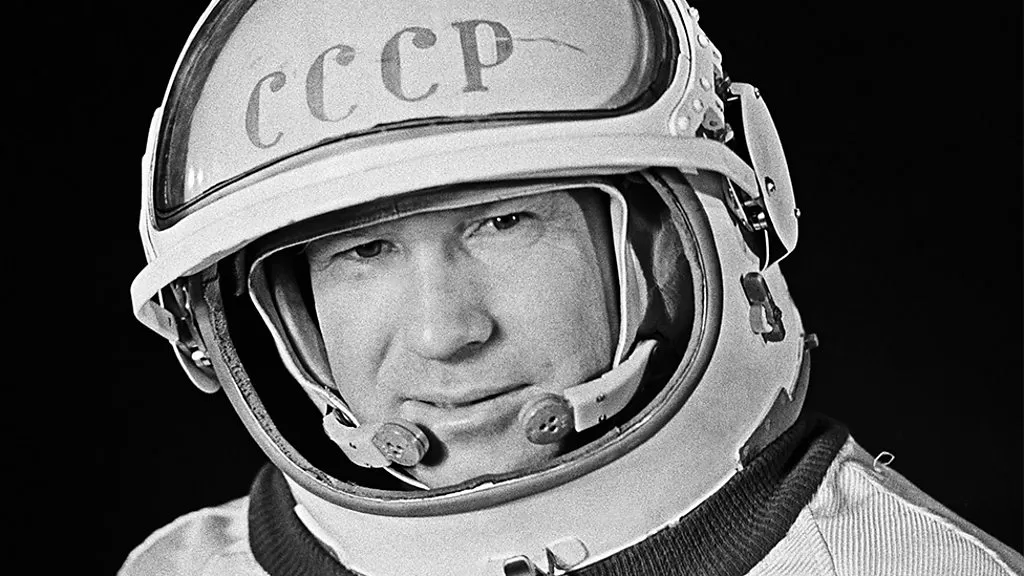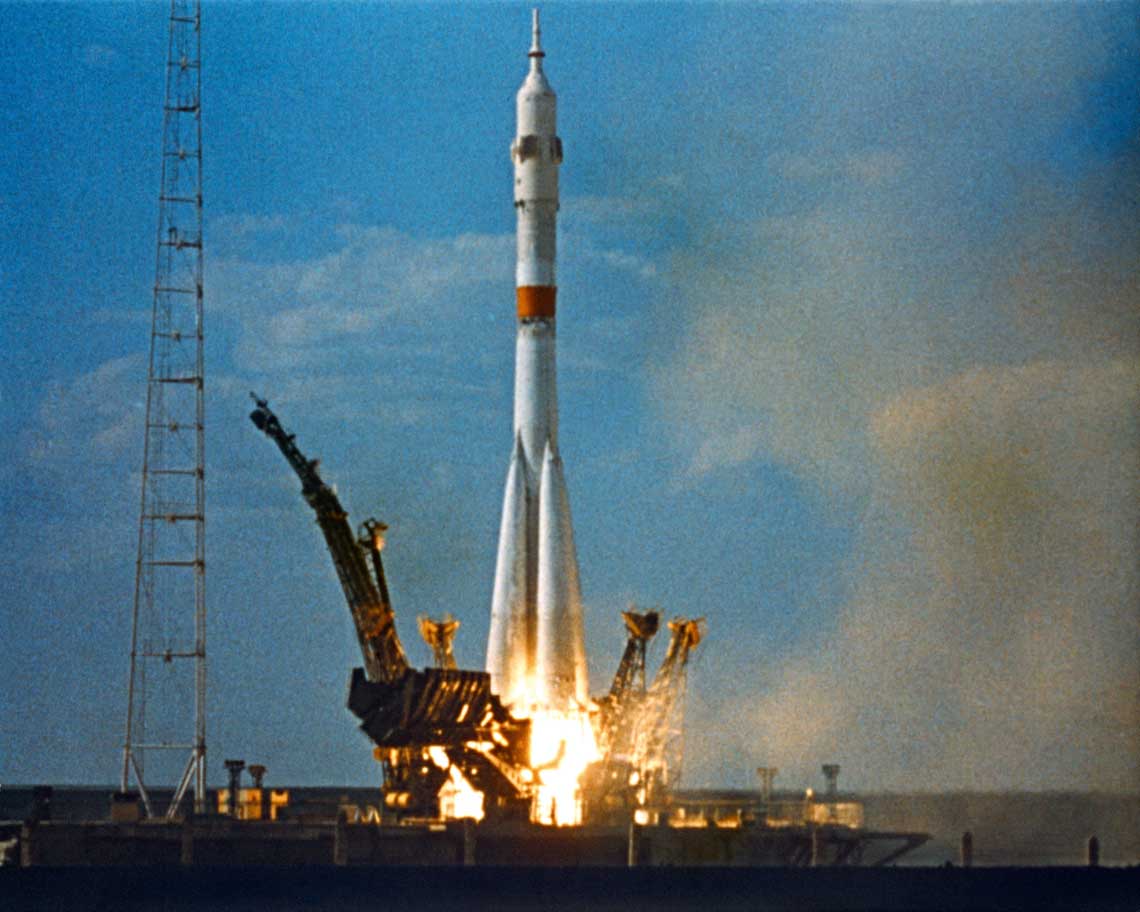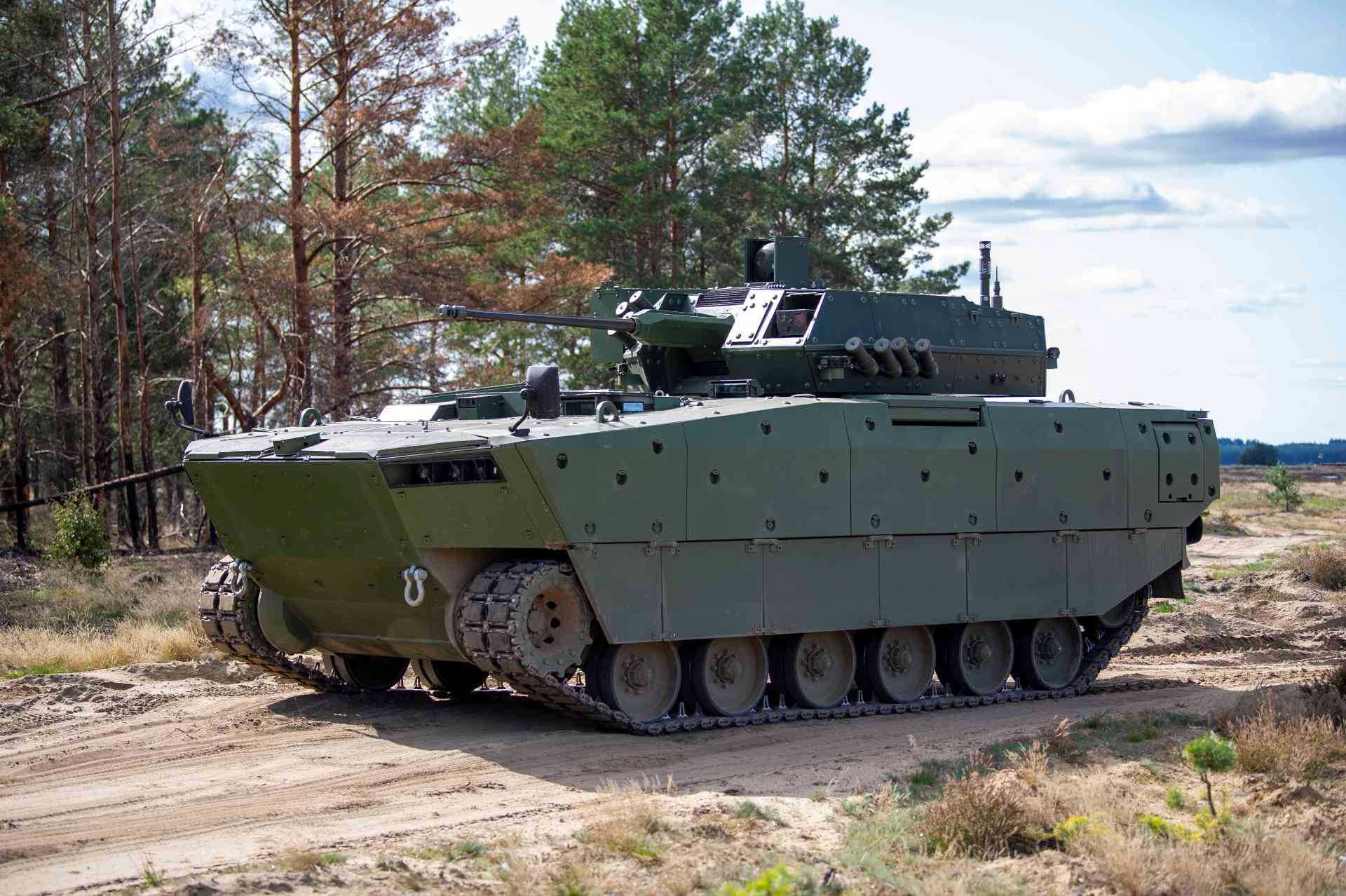
Died astronautics legend Alexei Leonov

The launch of the Soyuz-19 spacecraft for the ASTP mission.
It's October 11, 2019. NASA TV channel reports on spacewalk-11, which started at 38:56. This abbreviation stands for the 409th American spacewalk from the International Space Station. Astronauts Andrew Morgan and Christina Koch must replace more of the station's outdated batteries with new ones. This is a routine operation if anyone else wants to count 9 in the history of astronautics. Unexpectedly, a quarter of an hour after the start, the broadcast is interrupted to announce the sad news that Roscosmos has just broadcast. At 40 p.m., Alexei Leonov died, the first person in history to leave the interior of a spacecraft. A legendary cosmonaut, a pioneer of manned cosmonautics, a man with an extraordinary biography…
Alexey Arkhipovich Leonov was born on May 30, 1934 in the village of Listvyanka, Kemero Region. He was the ninth child in the family of the railway electrician Archip (1893–1981) and Evdokia (1895–1967). He began his primary education in Kemerovo, where a family of 11 lived in one room of 16 m2. In 1947 they moved to Kaliningrad, Alexei graduated from a tenth grade high school in 1953.
Initially, he wanted to become an artist, as he discovered a talent for painting in himself, but it turned out to be impossible to enter the Riga Academy of Arts due to lack of livelihood outside the family. In this situation, he entered the Tenth Military Aviation School in the city of Kremenchug, which trained future combat aviation adepts in the main direction. Two years later, he completed his studies, and then entered the elite School of Military Aviation Pilots (VAUL) in Chuguev near Kharkov.
He graduated in 1957 and on October 30 entered military service in the 113th Fighter Aviation Regiment of the Kyiv Military District with the rank of lieutenant. At that time, the first artificial Earth satellite, Sputnik, launched by the R-7 rocket, was around the Earth for several weeks. Alexei did not yet suspect that he would soon begin flying on a rocket, which is its experimental version. Since December 14, 1959 he served as a pilot of the 294th separate reconnaissance aviation regiment stationed in the GDR. There he received an offer to participate in the flights of the "new technology", as manned space flights were secretly called at that time. At that time, he had a flight time of 278 hours.
Cosmonaut
The first group of cosmonaut students was formed on March 7, 1960, consisting of twelve, and over the next three months, eight more fighter pilots. Their selection began in October 1959.
In total, 3461 air force, naval aviation and air defense pilots were in the circle of interest, of which 347 people were selected for preliminary interviews (accommodation, supplies), as well as training and equipment (without instructors). Due to technical shortcomings, which allowed only six pilots to be trained at the same time, such a group was selected based mainly on the results of psychophysical tests. It did not include senior lieutenant Leonov (he received a promotion on March 28), he had to wait for his turn in the second throw.
The first six, after passing the exams, received the title of "Air Force Cosmonaut" on January 25, 1961, Leonov, along with seven others, completed their general training on March 30, 1961 and officially became cosmonauts on April 4 of the same year. just eight days before Yuri Gagarin's flight. On July 10, 1961, he was promoted to the rank of captain. In September, together with several colleagues in the department, he begins his studies at the Aviation Engineering Academy. Zhukovsky with a degree in Design and Operation of Atmospheric Spacecraft and Their Engines. He will graduate in January 1968.
In connection with the emergence of a new group of candidates for cosmonauts in the CTX and the reorganization associated with this, on January 16, 1963, he was awarded the title "Cosmonaut of the CTC MVS". Three months later, he began preparations for the composition of the group of cosmonauts, one of whom was to take part in the flight of the Vostok-5 spacecraft. In addition to him, Valery Bykovsky, Boris Volynov and Evgeny Khrunov aspired to fly. Since the ship is close to the upper limit of the permitted mass, one of the most important criteria in this situation is the weight of the astronaut. Bykovsky and the suit weigh less than 91 kg, Volynov and Leonov weigh 105 kg each.
A month later, the preparations were completed, on May 10 a decision was made - Bykovsky flies into space, Volynov doubles him, Leonov is in reserve. On June 14, the flight of Vostok-5 comes into force, two days later Vostok-6 appears in orbit with Valentina Tereshkova on board. In September, everything indicates that the next Vostok will fly an astronaut who will spend 8 days in orbit, and then there will be a group flight of two ships, each of which will last 10 days.
Leonov is part of a group of nine, whose training begins on September 23rd. Until the end of the year, the flight schedule of the ships and the composition of the crews change several times, but Leonov is in the group every time. In January, the head of the civil space program, Sergei Korolev, shocked everyone by suggesting that the Vostok be converted into three-seat ships. Having received the support of Khrushchev, the existing crews are disbanded. On January 11, 1964, Leonov was promoted to the rank of major, and on April 1, he began his adventures with the Voskhod program. He is part of a group preparing for the first flight of a crew of three. Preparations for this trip, which lasts 8-10 days, will start on April 23rd.
On May 21, the head of cosmonaut training, General Kamanin, forms two crews - in the first, Komarov, Belyaev and Leonov, in the second, Volynov, Gorbatko and Khrunov. However, Korolev believes otherwise - civilians should also be included in the crew. After sharp clashes on May 29, a compromise is reached, this time Korolev wins - there will be no place for Leonova in the first East. And in the second?
Voskhod
On June 14, 1964, a decree was published on the implementation of a flight with a manned spacewalk. There were only seven of them in the Air Force cosmonaut detachment - Belyaev, Gorbatko, Leonov, Khrunov, Bykovsky, Popovich and Titov. However, the last three, as having already flown, were not included in the training. In this situation, in July 1964, preparations for the "Exit" task were started only for the first four, with the first two being commanders, and the second being exits. However, on July 16, preparations were interrupted when it became clear that the flight would not take place until next year.
After the candidates had stayed in the sanatorium for a month, training resumed on August 15, and Zaikin and Szonin joined the group. The training was difficult, since the Voskhod simulator did not yet exist at that time and the astronauts had to use the ship on which they were to fly, which was then at the assembly stage. The entire process of exiting the airlock was overtrained in December in a state of weightlessness, which worked briefly during parabolic flights on a Tu-104 aircraft. Leonov made 12 such flights and six more on the Il-18 aircraft.
